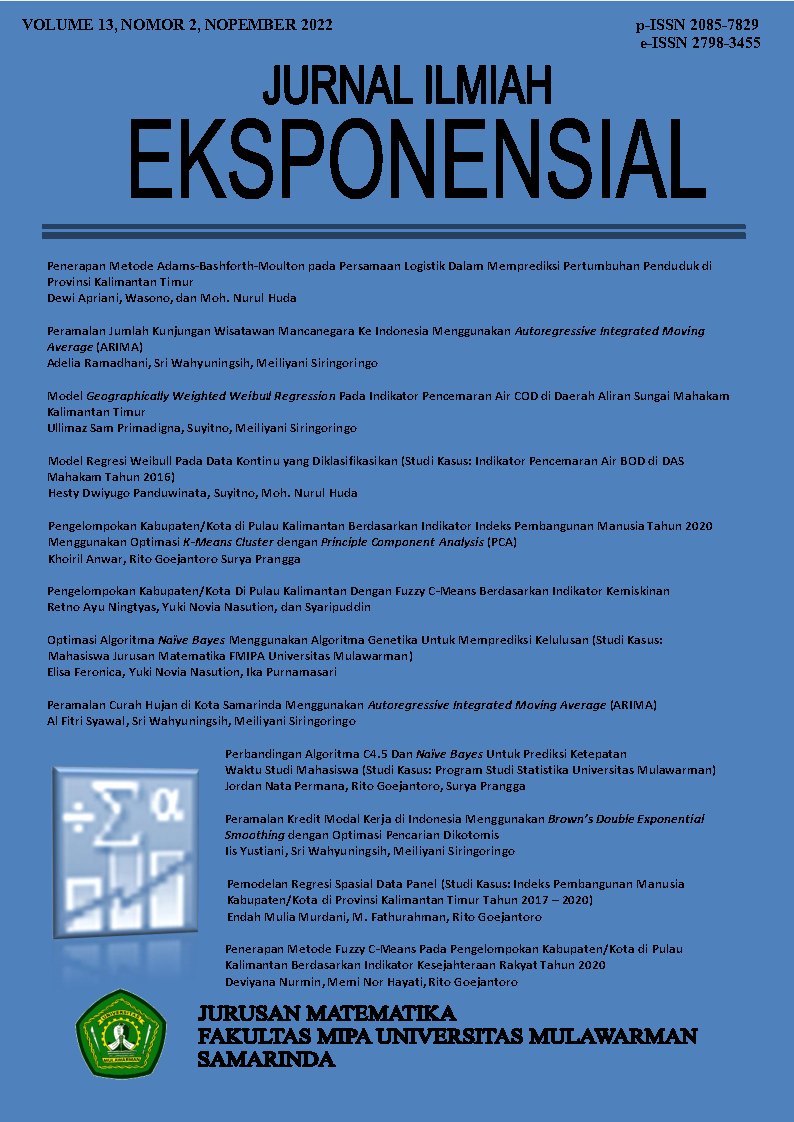Pengelompokan Kabupaten/Kota Di Pulau Kalimantan Berdasarkan Indikator Indeks Pembangunan Manusia Tahun 2020 Menggunakan Optimasi K-Means Cluster Dengan Principle Component Analysis (PCA)
DOI:
https://doi.org/10.30872/eksponensial.v13i2.1053Keywords:
Human Development Index Indicator, K-Means Cluster, Principle Component Analysis, Silhoutte CoefficientAbstract
Data mining is a technique or process to obtain useful information from a large database. Based on its functionality, one of the tasks of data mining is to group data. Cluster analysis is an analysis that aims to group objects based on the information found in the data. One of the cluster analysis methods is the K-Means cluster method, which is a non-hierarchical grouping method by dividing the data set into a number of groups that do not overlap between one group and another. This study aims to classify districts/cities on the island of Kalimantan based on indicators of the human development index and obtain the sillhoutte coefficient value from the optimal cluster analysis using the K-Means algorithm on principle component analysis. The data used is the 2020 human development index data in districts / cities on the island of Kalimantan and used 8 variables from the human development index indicator. The results of the optimal cluster formed in the grouping of regencies/cities on the island of Kalimantan using the K-Means cluster method on the principle component analysis are 4 clusters. Cluster 1 has 20 regencies/cities, cluster 2 has 3 regencies/cities, cluster 3 has 26 regencies/cities and cluster 4 has 7 regencies/cities. The sillhoutte coefficient value for data validation from district/city clustering on the island of Kalimantan using the K-Means cluster method on principle component analysis produces 4 clusters of 0.540 which states that the cluster structure formed in this grouping is a medium structure.


